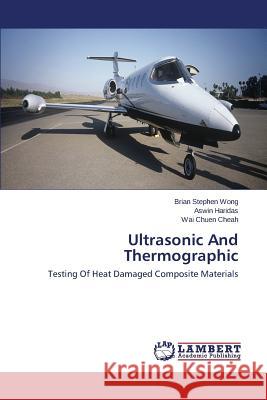Ultrasonic And Thermographic » książka
Ultrasonic And Thermographic
ISBN-13: 9783659709821 / Angielski / Miękka / 2015 / 100 str.
This book presents the study of the temperatures at which delamination starts to occur in different samples of Carbon Fibre Reinforced Polymer (CFRP). The sensitivity of different Non-Destructive Testing (NDT) techniques of Ultrasonic Testing and Active Thermography on heat-treated composite materials would also be discussed. The composite specimens are heated by a heat gun for a time interval of 35 minutes. The process is repeated with different temperatures, maintaining the time interval. Ultrasonic Testing and Thermography will then be conducted to determine the extent of the damaged areas. This book will present the results obtained from Visual Inspection, Ultrasonic C-Scan and Thermography. The objective of the book is to determine the amount of heat required to damage the composite specimens. The internal damage results would also be compared with external visual damage due to the heat to determine correlations between the two. Attempts to correlate the heat resistivity of the composite specimens with temperature would also be discussed. Future work could involve proposing damage fracture growth mechanisms which have not been widely reported in the literature.
This book presents the study of the temperatures at which delamination starts to occur in different samples of Carbon Fibre Reinforced Polymer (CFRP). The sensitivity of different Non-Destructive Testing (NDT) techniques of Ultrasonic Testing and Active Thermography on heat-treated composite materials would also be discussed. The composite specimens are heated by a heat gun for a time interval of 35 minutes. The process is repeated with different temperatures, maintaining the time interval. Ultrasonic Testing and Thermography will then be conducted to determine the extent of the damaged areas. This book will present the results obtained from Visual Inspection, Ultrasonic C-Scan and Thermography. The objective of the book is to determine the amount of heat required to damage the composite specimens. The internal damage results would also be compared with external visual damage due to the heat to determine correlations between the two. Attempts to correlate the heat resistivity of the composite specimens with temperature would also be discussed. Future work could involve proposing damage fracture growth mechanisms which have not been widely reported in the literature.











